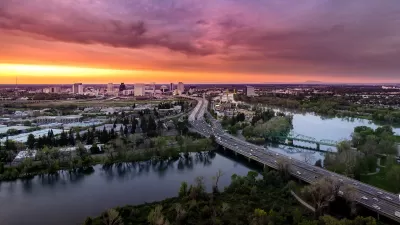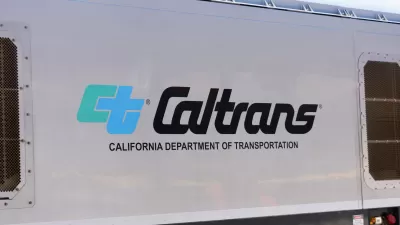Choosing the Goldilocks price for a congestion-priced toll lane is no easy task - as the Georgia Dept. of Transportation has discovered after the first week of operation of the I-85 Express Lanes through parts of Gwinnett and DeKalb counties.
The 10-slide photo gallery of the empty express lane by the congested 'general purpose lanes' and the video of irate motorists say it all. In addition to potentially choosing too high a price range, the high-occupancy-vehicle (carpool) lane conversion to the high-occupancy-toll (HOT or Express) lane was accompanied by disallowing free access of 2-person carpools - only 3+ carpools, motorcycles, vehicles with alternative fuel license plates, and public transit buses travel at no cost.
Consequently, Governor Nathan Deal reduced the toll on Oct. 6 and requested a waiver to allow free access for 2-person carpools.
"Before Deal's action, the maximum that had actually been charged to travel the full 16 miles was $5.50; under the new pricing it will be $3.05, Robinson (his spokesman) said. That's a 44.5 percent decrease; Robinson indicated that similar reductions would apply across the board.
Deal also pledged Thursday to ask the federal government for a waiver allowing two-person vehicles to use the lanes free. That request could run afoul of a legal requirement that the HOT lanes flow at 45 mph or better."
From GDOT: I-85 Express Lanes:
"Registered vehicles can use Express Lanes for a fee that will vary dynamically based on the number of vehicles using the system. The fee will be set to ensure free flowing traffic and reliable trip times in Express Lanes. Visit the PeachPass website to register your vehicle."
Thanks to Bob Poole
FULL STORY: Deal lowers tolls on I-85 HOT lanes-with video

Alabama: Trump Terminates Settlements for Black Communities Harmed By Raw Sewage
Trump deemed the landmark civil rights agreement “illegal DEI and environmental justice policy.”

Planetizen Federal Action Tracker
A weekly monitor of how Trump’s orders and actions are impacting planners and planning in America.

Why Should We Subsidize Public Transportation?
Many public transit agencies face financial stress due to rising costs, declining fare revenue, and declining subsidies. Transit advocates must provide a strong business case for increasing public transit funding.

Understanding Road Diets
An explainer from Momentum highlights the advantages of reducing vehicle lanes in favor of more bike, transit, and pedestrian infrastructure.

New California Law Regulates Warehouse Pollution
A new law tightens building and emissions regulations for large distribution warehouses to mitigate air pollution and traffic in surrounding communities.

Phoenix Announces Opening Date for Light Rail Extension
The South Central extension will connect South Phoenix to downtown and other major hubs starting on June 7.
Urban Design for Planners 1: Software Tools
This six-course series explores essential urban design concepts using open source software and equips planners with the tools they need to participate fully in the urban design process.
Planning for Universal Design
Learn the tools for implementing Universal Design in planning regulations.
Caltrans
Smith Gee Studio
Institute for Housing and Urban Development Studies (IHS)
City of Grandview
Harvard GSD Executive Education
Toledo-Lucas County Plan Commissions
Salt Lake City
NYU Wagner Graduate School of Public Service





























